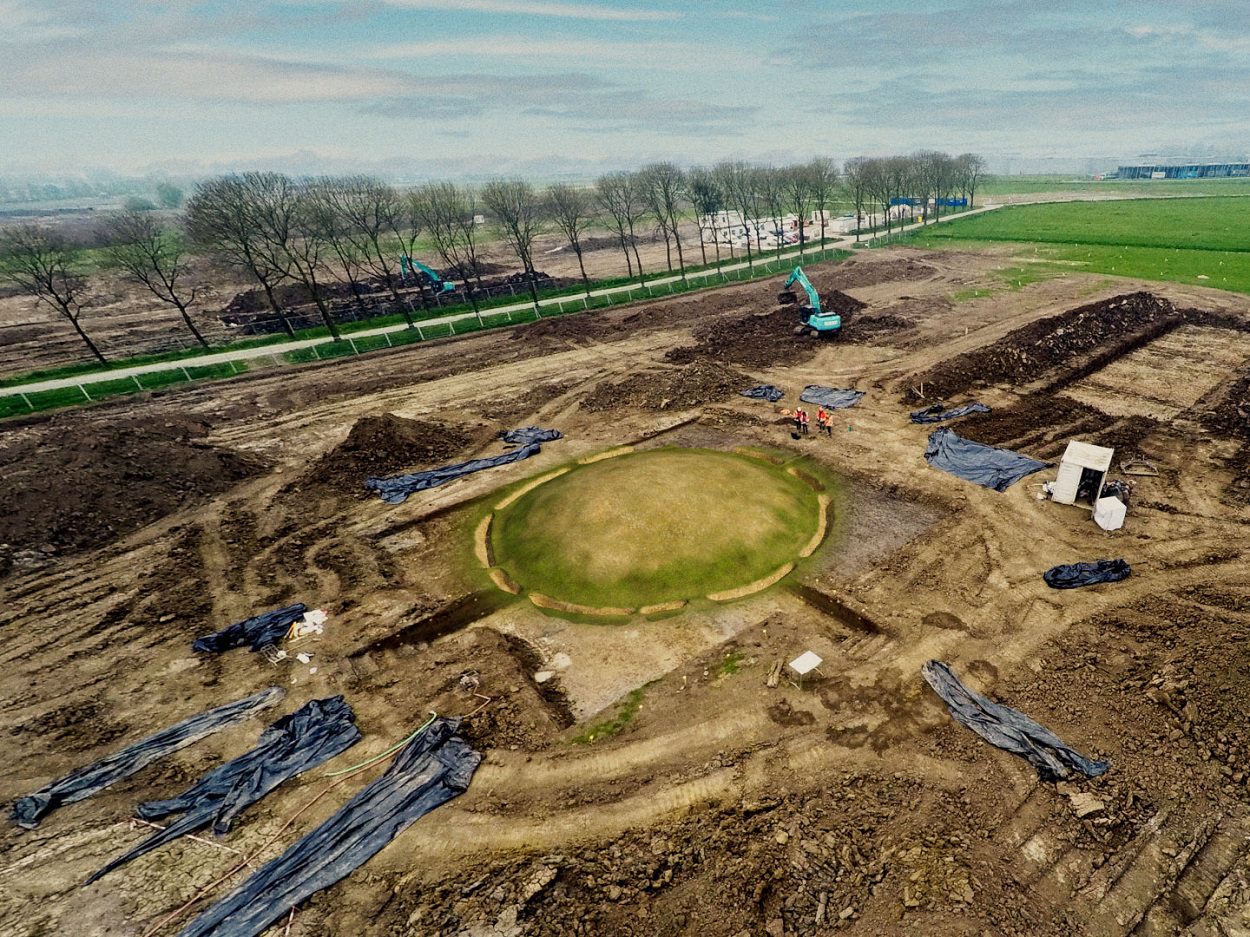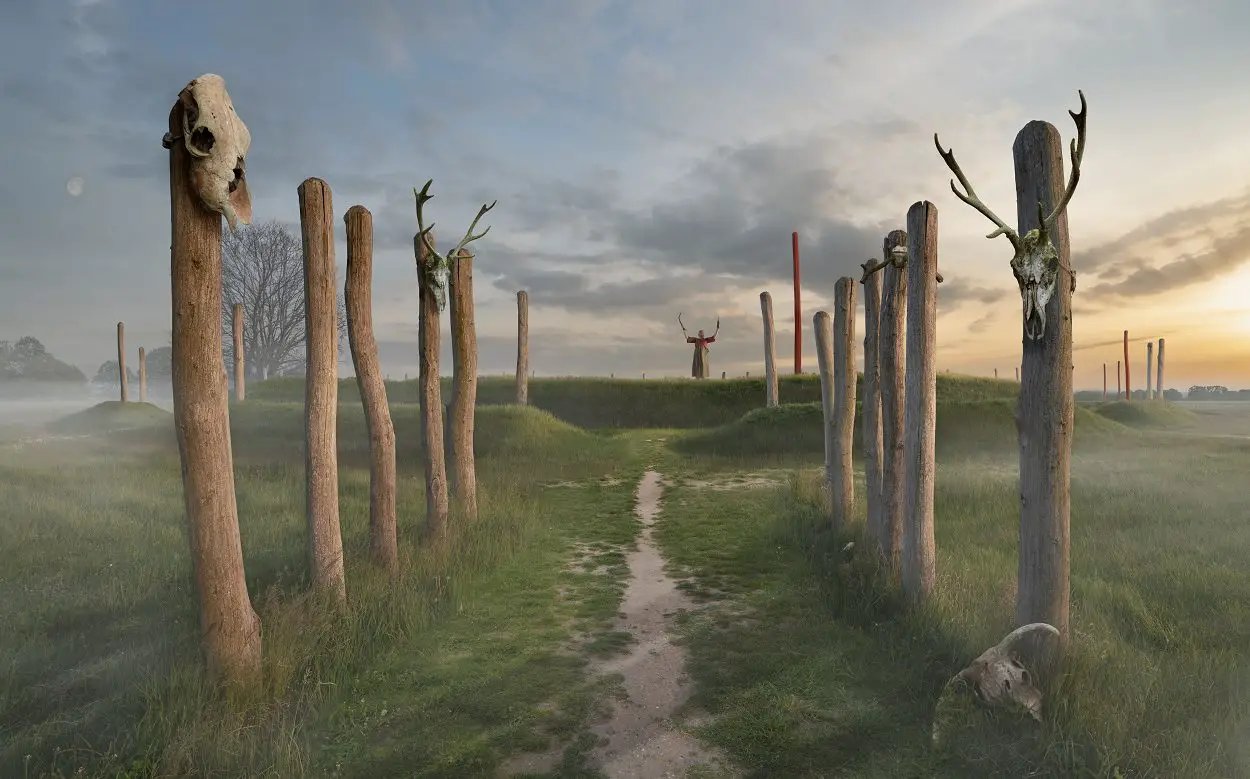The discovery was made during excavations of the Medel industrial estate in Tiel, revealing a large 4000-year-old sanctuary dedicated to the sun.
The sanctuary consists of several raised mounds, the largest of which has a diameter of 20 metres and has a shallow ditch with several passage openings which are aligned with the sun on the summer and winter solstices.
The alignment of the sanctuary with the movements of the sun indicates the significant importance placed on tracking celestial patterns by its ancient builders. The site is comparable to Stonehenge in England, where according English Heritage: “Midsummer and midwinter may have been important times of year to remember the dead or to worship a solar deity.”
Excavations also found ritual offerings of animal skeletons, human skulls, and a bronze spearhead, which were deposited in the openings at the precise spot where the sun shone during the solstices.

According to the researchers: “The sanctuary must have been a highly significant place where people kept track of special days in the year, performed rituals and buried their dead. Rows of poles stood along pathways used for processions.”
In the vicinity of the sanctuary are numerous burial mounds, in which archaeologists have found the remains of more than 80 individuals either as cremated burials or inhumation burials. The largest of these mounds contained the remains of men, women and a large concentration of children, and appears to have been an active site for burying the dead for around 800 years.
Previous studies in the vicinity of the sanctuary have uncovered a glass bead from Iraq (suggesting that the inhabitants of the region had some level of contact with people almost 5000 kilometres away some 4000-years-ago), as well as more than a million finds from the Stone Age, Bronze Age, Iron Age, Roman Age and the Middle Ages.
Header Image Credit : Alexander van de Bunt / Municipality of Tiel





